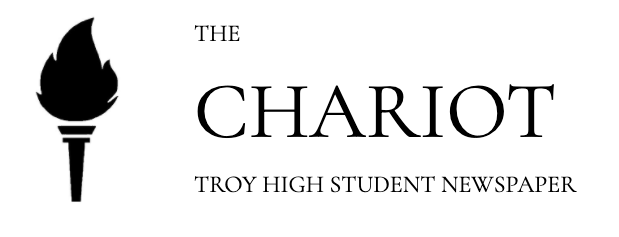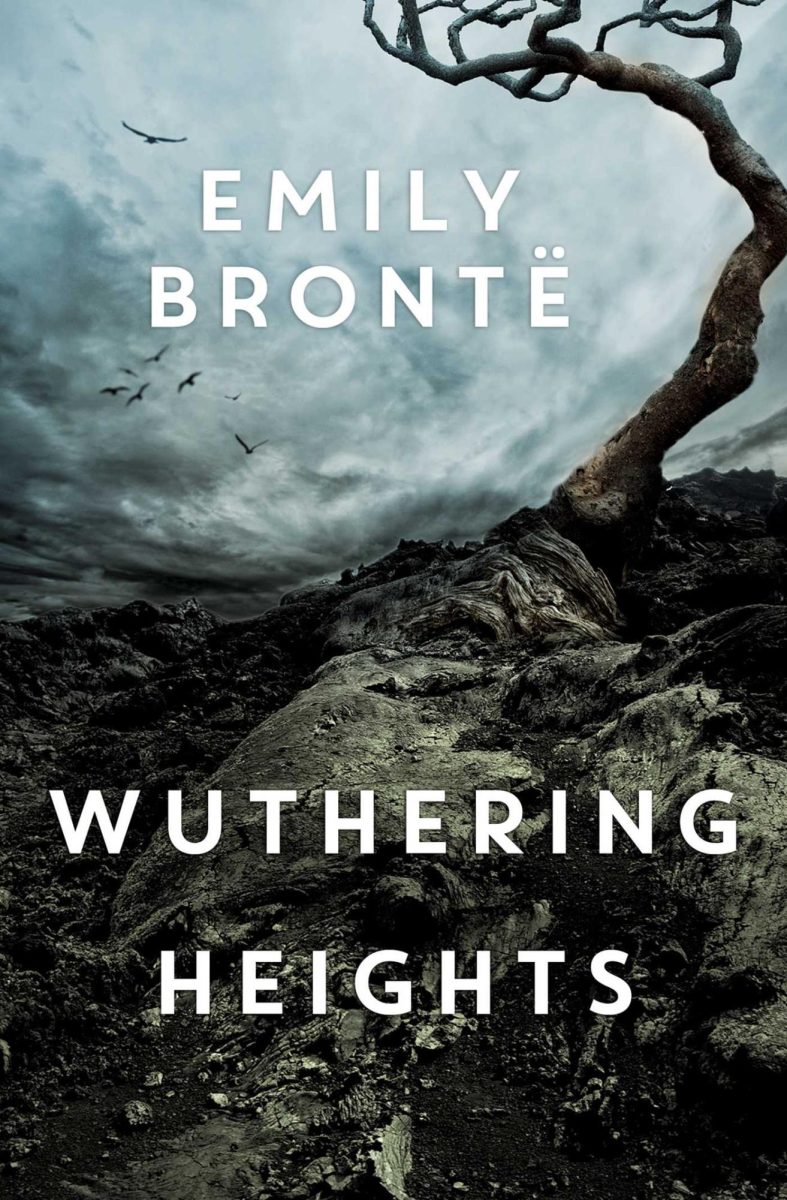It seems everyone on Earth has heard of the Brontës, it is impossible to escape them even now in 2025. In fact, a new film adaptation of Emily Brontë’s “Wuthering Heights” is even in production at the moment, albeit to little fanfare at the casting choices of the leads. Nevertheless, the three sisters, Charlotte, Emily and Anne, penned some of literature’s most beloved classics which I felt inclined to read, one from each sister.
Emily’s “Wuthering Heights” published in 1847 was my first conquest. This was primarily due to the ostentatious amount of times the book was brought up in the “Twilight” series that I read throughout elementary and middle school, in which Edward Cullen likened himself to the book’s male lead, Heathcliff, on numerous instances. I assume this was a desperate attempt by the author to add complexity to Edward by comparing him to a renowned dark and complex character such as Heathcliff. I was curious to see if this self important comparison was as ridiculous as it sounded.
“Wuthering Heights,” the torrid love story between Heathcliff and Catherine Earnshaw. Oh, where do I begin? This was possibly the most trying time I’ve had reading a book since “The Scarlet Letter,” which I took one look at in eighth grade before discarding for my dog to chew on. It wasn’t my fault, there were too many words on the pages. Yet, I believed I was mature and enlightened enough now in my 16th year to be able to digest “Wuthering Heights,” and I did!
I admit to feeling high and mighty toting this little number about like “yes, yes, I know it’s a classic, no pictures please!”
I ended up reading the actual novel twice and the graphic novel once. The graphic novel step was absolutely essential as my first read of the novel was a bowl of nothingness where whenever I would sit down to actually read it, the most all encompassing brain fog would possess me. Despite being the shortest of the bundle, “Wuthering Heights” is the most densely packed work, with every other page containing a most daunting block of text that my lazy eyes enjoyed skipping. This little trick of mine led me to grasp nothing of the book as I skimmed most of it. The graphic novel was a welcome tool and I was able to follow the plot with my dopamine hungry eyes enjoying the visual stimulation. There were so many plot points I had missed! For example, how I had not noticed how much these characters hurled slaps and punches at each other! How enticing! I returned to the novel with a renewed fervor and forced myself to read every word, which wasn’t fun for me. It was still a little jumbled.
Nonetheless, it improved drastically and I found myself changing my review of the novel from three to five wonderful stars!
Next was the one I had heard of the most, and that for an embarrassingly long time thought was a Jane Austen novel, “Jane Eyre” published by Charlotte Brontë in 1847. “Jane Eyre” was by far the longest at over 650 pages yet it felt the least like a chore for me to read. That is, after Jane finished narrating her childhood as I found that quite boring despite the rampant child abuse she experienced which ordinarily would grab my attention, alas it did not. However, once I got into it, I was entranced and the book was all I could think about day and night. For reference, it took me a week and a half to get past the childhood portion and I gluttonously devoured the last 400-ish pages in two days. “Jane Eyre” was the one out of the group most resembling a romance, with the back cover even referring to the relationship of the titular character Jane Eyre and her male companion, Edward Rochester, as one of literature’s “most enduring love stories.” Boy, does it endure, it endures a whole lot.
Even with that emotional roller coaster, “Jane Eyre” won my heart in a landslide victory, unfortunately five stars is all I can bestow it.
The last Brontë read of mine was “The Tenant of Wildfell Hall” published by Anne Brontë in 1848 which follows the mysterious Helen Graham and the trials of her past that led her to the aforementioned Wildfell Hall all observed by Gilbert Markham. Like a lazy little sloth, I procrastinated reading this one until spring break where, in a fit of rare motivation, I burned through it in a day and a half. This was not that difficult for me as this book, in terms of language, was the easiest to read of them all.
“Jane Eyre” and “Wuthering Heights” outweigh this book in popularity, but not in my mind, as the development of Helen Graham was of a most tender variety that earned it five stars for me!
Feminism plays a large role in these novels, specifically “The Tenant of Wildfell Hall” and “Jane Eyre” which have female protagonists and explore themes of female independence.
Charlotte Brontë’s heroine, Jane Eyre, was written with a very strong moral character; she would not give up any aspect of herself and her principles for anything, even love. She doesn’t budge even when presented with the opportunity to become of a greater social class despite describing herself as “poor.” Even if it meant being a spinster for the rest of her days, Jane throughout the book remained steadfast in her moral code, making her a character of indestructible will and remarkable independence especially considering the time in which Charlotte Brontë wrote her, that being in England in the early 19th century where women, especially women of lower social class like Jane, had little rights or freedom within or outside of marriage.
Anne Brontë’s Helen Graham was possibly the most “feminist” of the bunch. Helen escaped an abusive marriage all on her own to protect herself and her son. At the time, divorce was illegal and a woman like Helen would have little choice rather than enduring the abuse, however, she leaves for her son, to prevent him from being poisoned by the toxic environment. Like Jane, Helen was written to be a woman of powerful mental fortitude, one aware of her own merit. Both Jane and Helen are the driving forces of their respective books.
The strong suit of “Wuthering Heights,” however, is in the male lead of Heathcliff. He is considered in literature as a classic Romantic hero, a better word for him would be “antihero.” Heathcliff as an adult is brash, closed off, cruel, and an overall headache. His biggest flaw is his unquenchable thirst for vengeance and retribution against anyone who treated him poorly as a child and he creates a heaping trail of destruction in his plight. Heathcliff is not meant to be redeemed for his actions, for “Wuthering Heights” is not a romance. On the other hand, the heroes of the other two novels are, while definitely flawed, overall meant to be redeemable and good people. Mr. Rochester and Gilbert Markham, interestingly, share the trait of being especially moody, with Mr. Rochester’s moodiness manifesting in overdramatic brooding and aloof tendencies.
Contrasted with Heathcliff, neither Gilbert nor Mr. Rochester are the “main characters” of their books; “Jane Eyre” is about Jane Eyre, “The Tenant of Wildfell Hall” is about Helen Graham, the tenant of Wildfell Hall. Heathcliff is, at least in my interpretation, the central figure of “Wuthering Heights” as he appears in the book far longer than Catherine which is an example of “Wuthering Heights” not being as “feminist” as the other two, Heathcliff’s devolution is the heart of the story. Catherine Earnshaw, his female counterpart, doesn’t have much agency as her decisions are largely ruled by her social class that ends up alienating Heathcliff and leads to his vengeance fueled downward spiral. Catherine is unique where she is the most obviously flawed female character; she is selfish, petulant and particularly possessive of Heathcliff just like Heathcliff is fervently possessive over her. A match made in heaven! Catherine lives to haunt Heathcliff, a device of sorts that helped fester Heathcliff’s hatred of those around him.
Mr. Rochester and Gilbert Markham, while characters in their own right, function as devices to develop the female leads. Through falling in love with Mr. Rochester, Jane Eyre is forced to reckon with what she is willing to sacrifice to stay true to her virtues. She changes as a result of Mr. Rochester’s influence and ends the book better for it. Gilbert Markham is used as a tool by Anne Brontë to perceive Helen Graham. The first part is told through his perspective to keep the mystery surrounding Helen’s backstory, the second part pivots to Helen’s diary entries that divulge her origins to Gilbert through her perspective and the third returns to Gilbert to fully round out his and the reader’s perception of Helen and her journey.
These aforementioned characters may be fictional, but Heathcliff’s anger is not unfounded or exaggerated, Catherine’s selfishness is as relatable as it is frustrating and Jane’s resilience is what truly represents the spirit of human beings. The Brontës themselves all had turbulent lives, with illnesses and addictions plaguing the family with all of them passing away quite young. Yet, they were able to transform this pain into words, into stories that have remained iconic almost two centuries later. Her brother’s spiral into alcoholism inspired Anne’s book, Jane Eyre’s experiences in boarding school mimicked Charlotte’s own and the effects of the early deaths of other Brontë siblings informed the tortured grief in Emily’s work. What truly united the Brontë sisters in my eyes was the distinct humanity that prevailed in their words.


